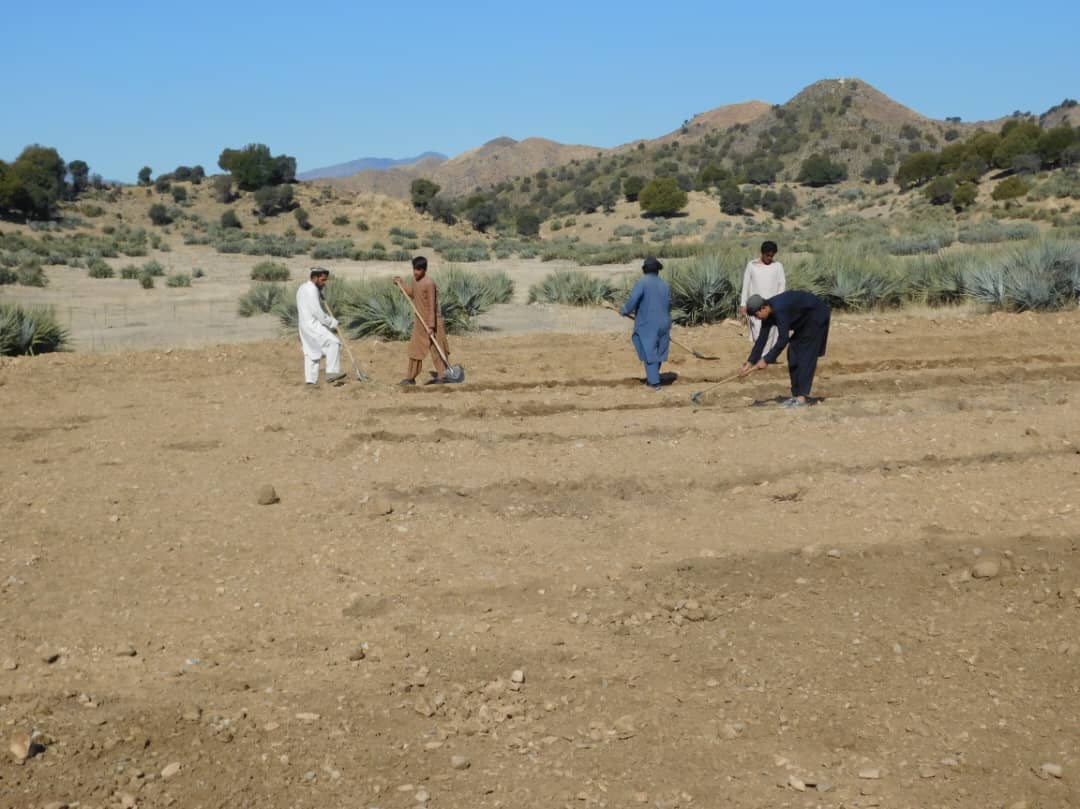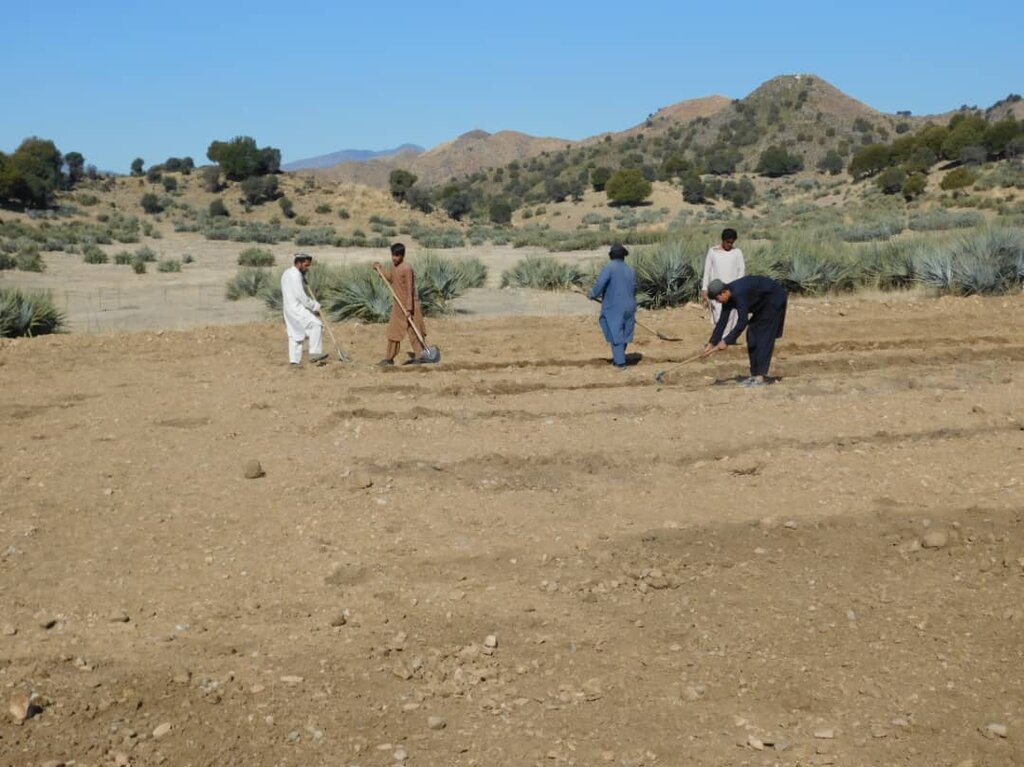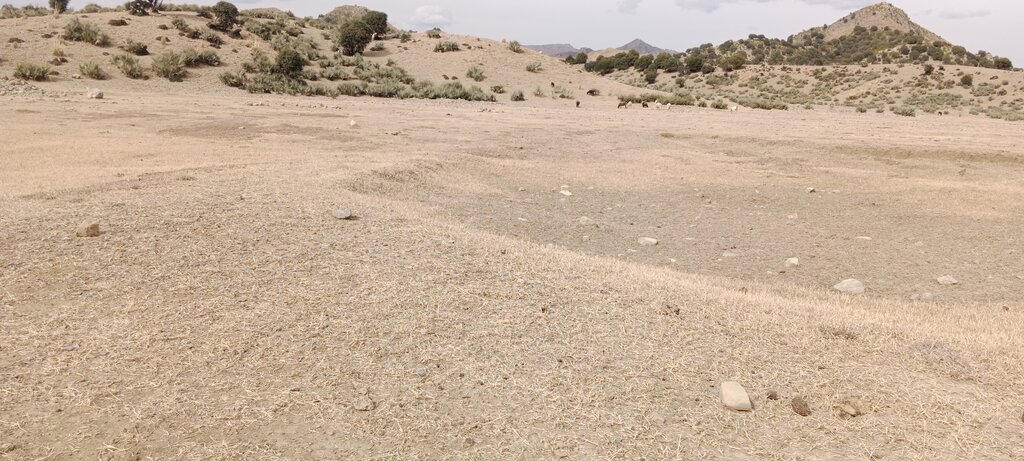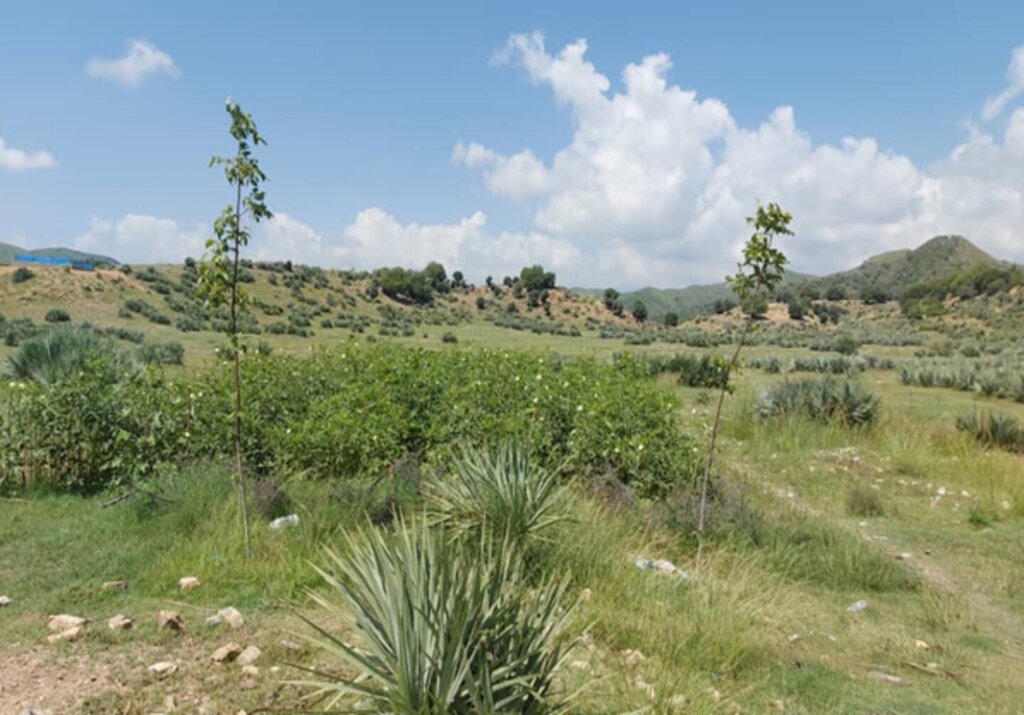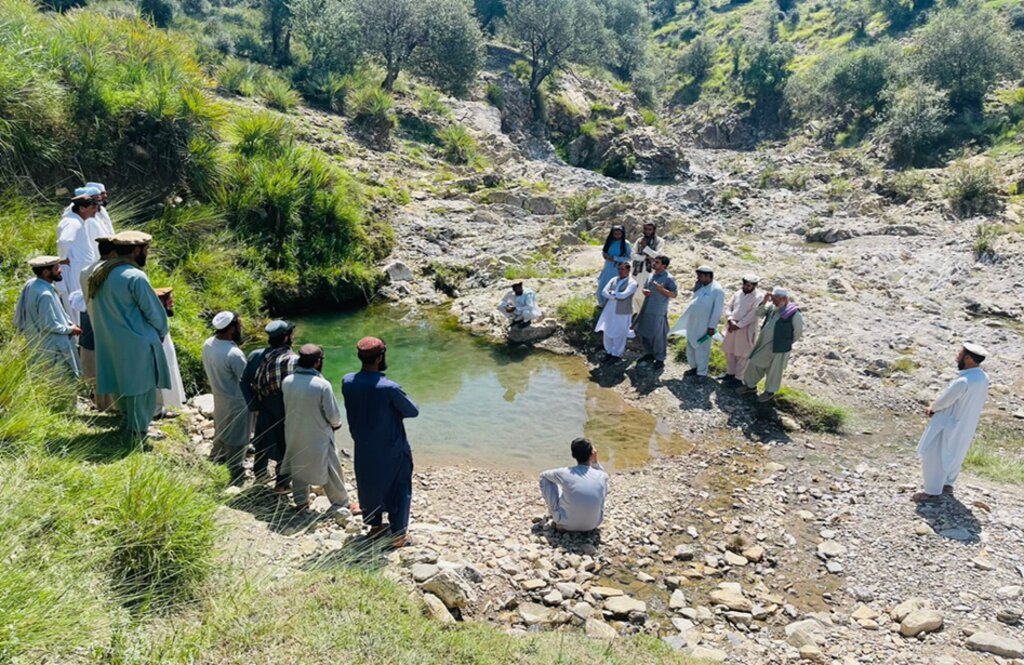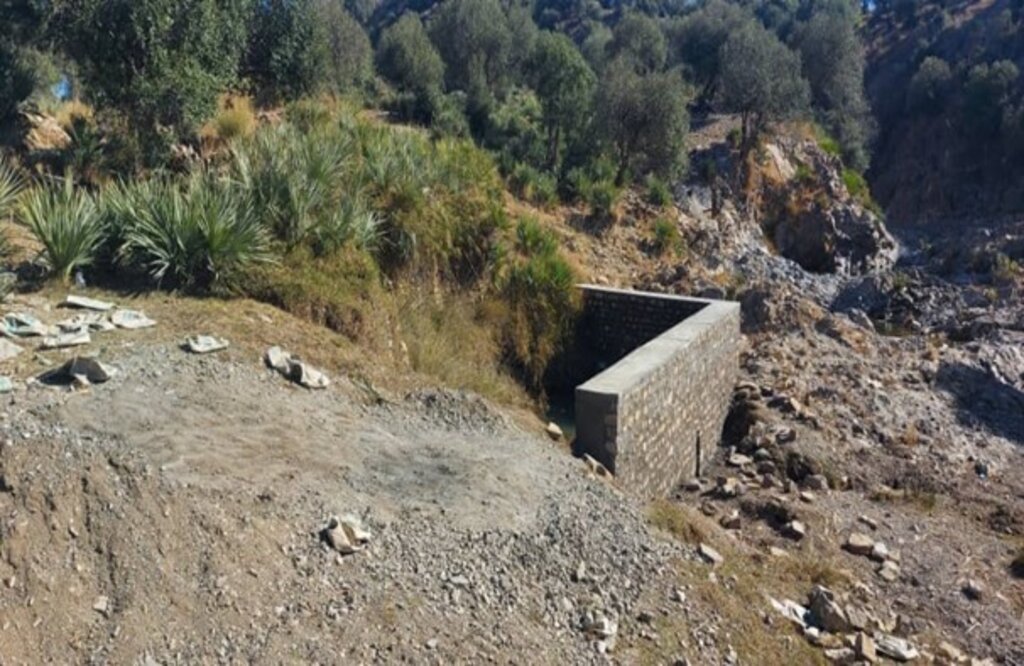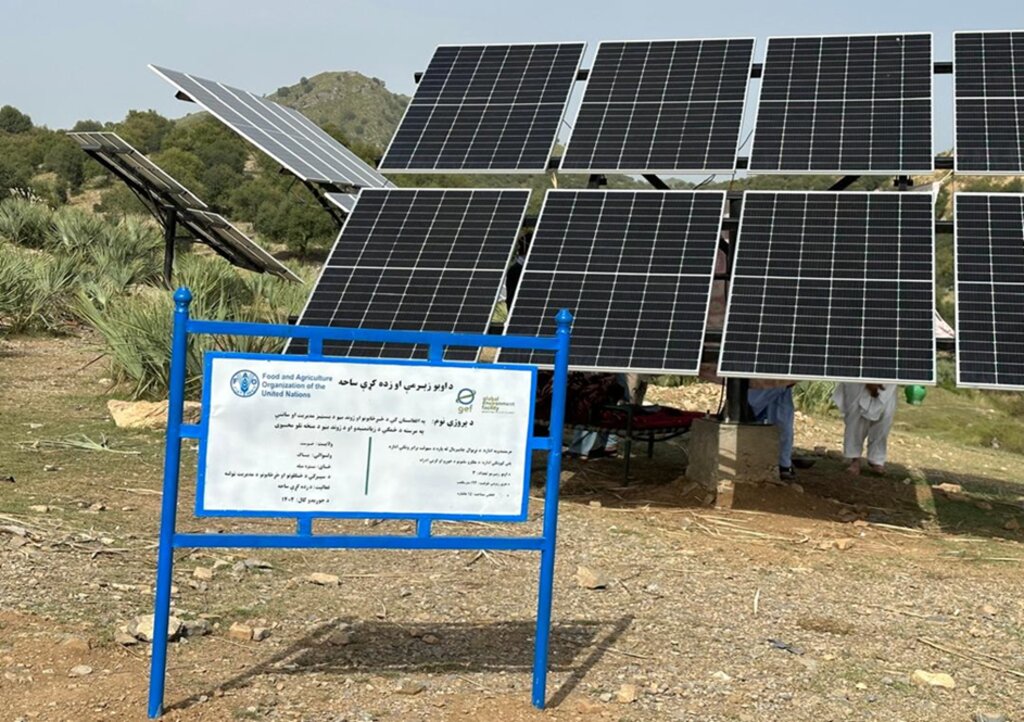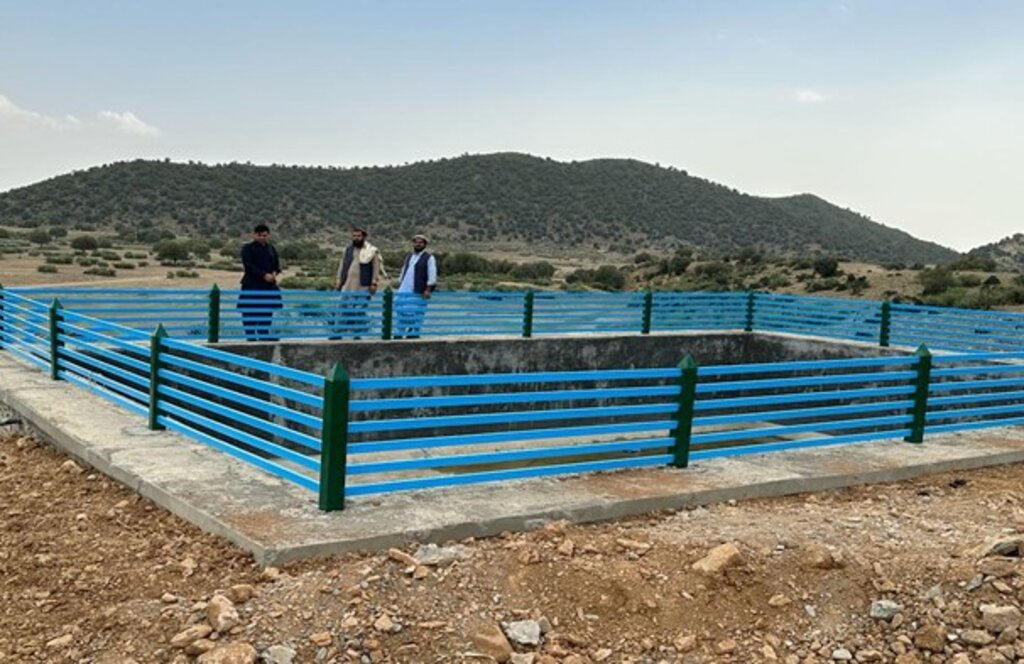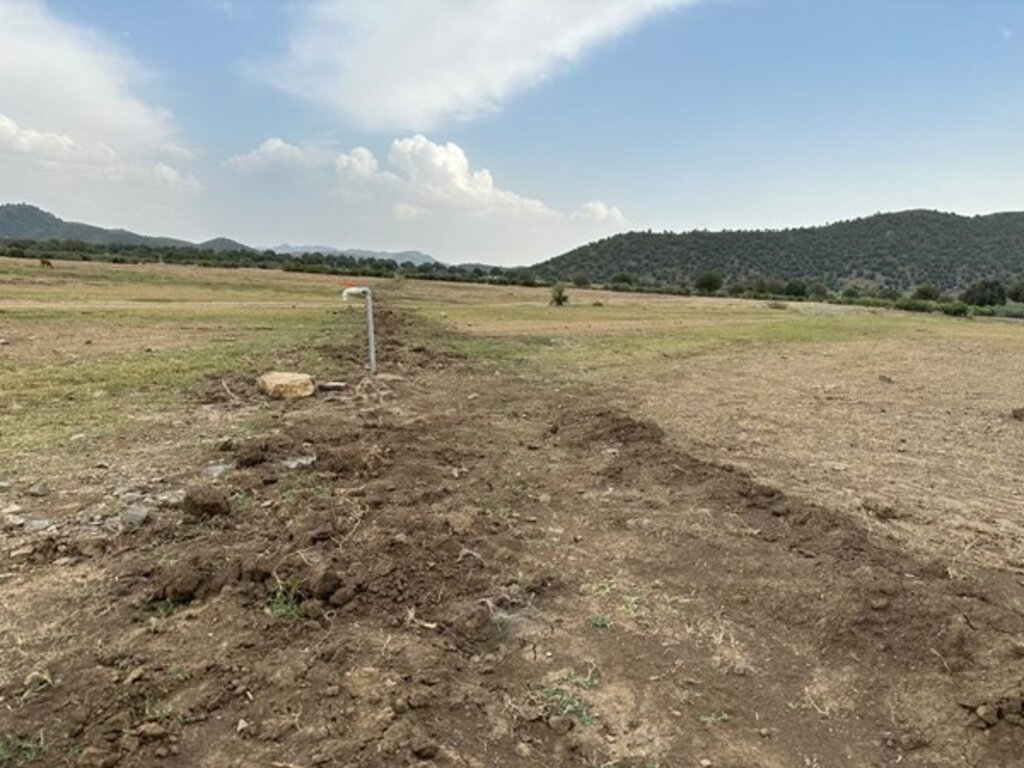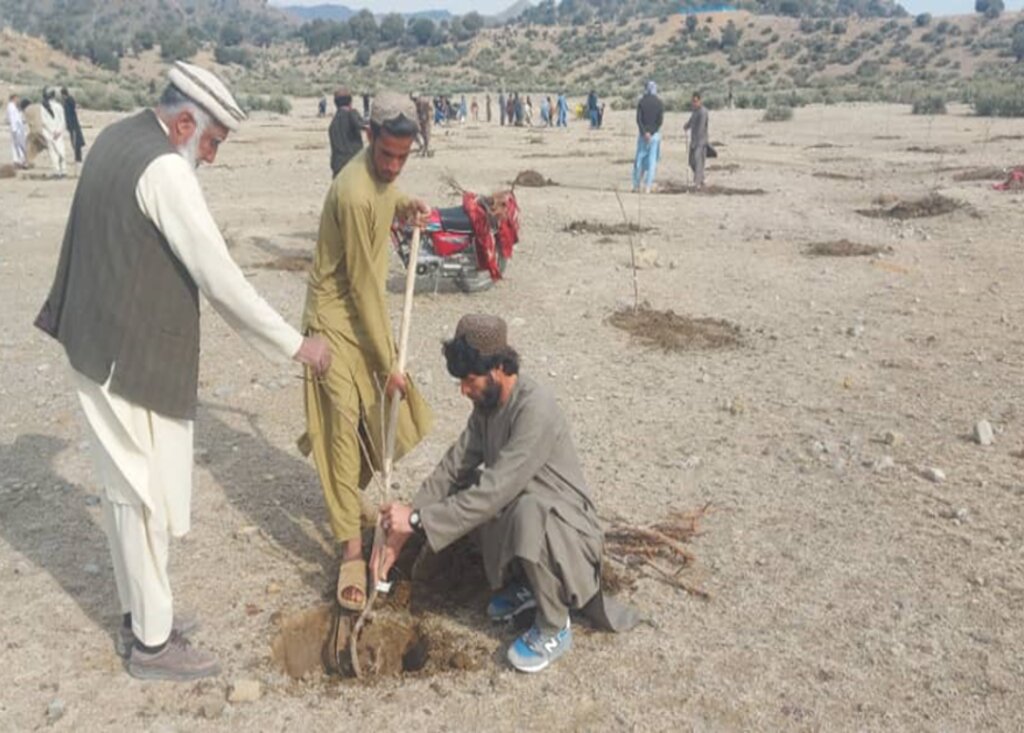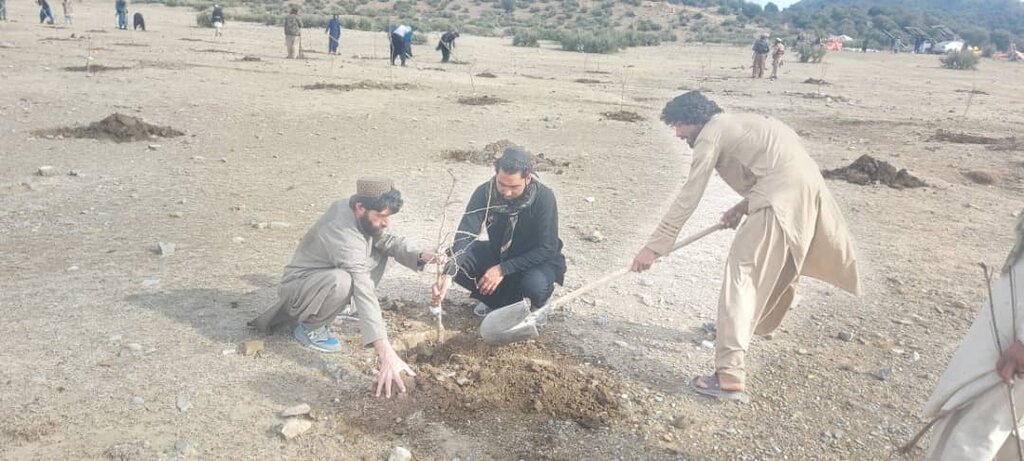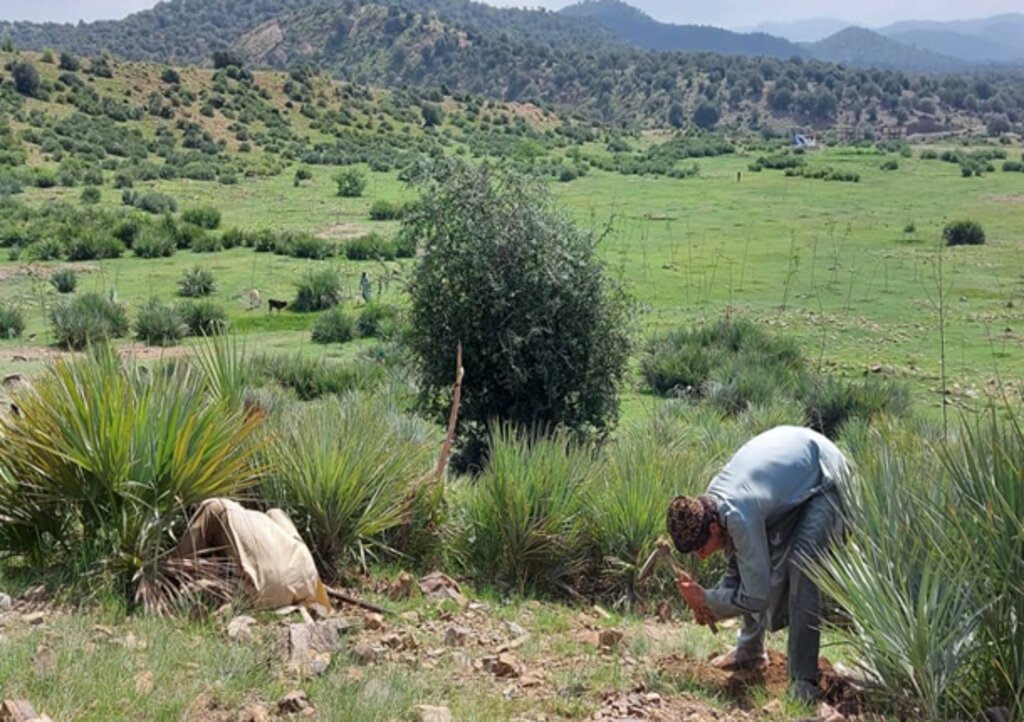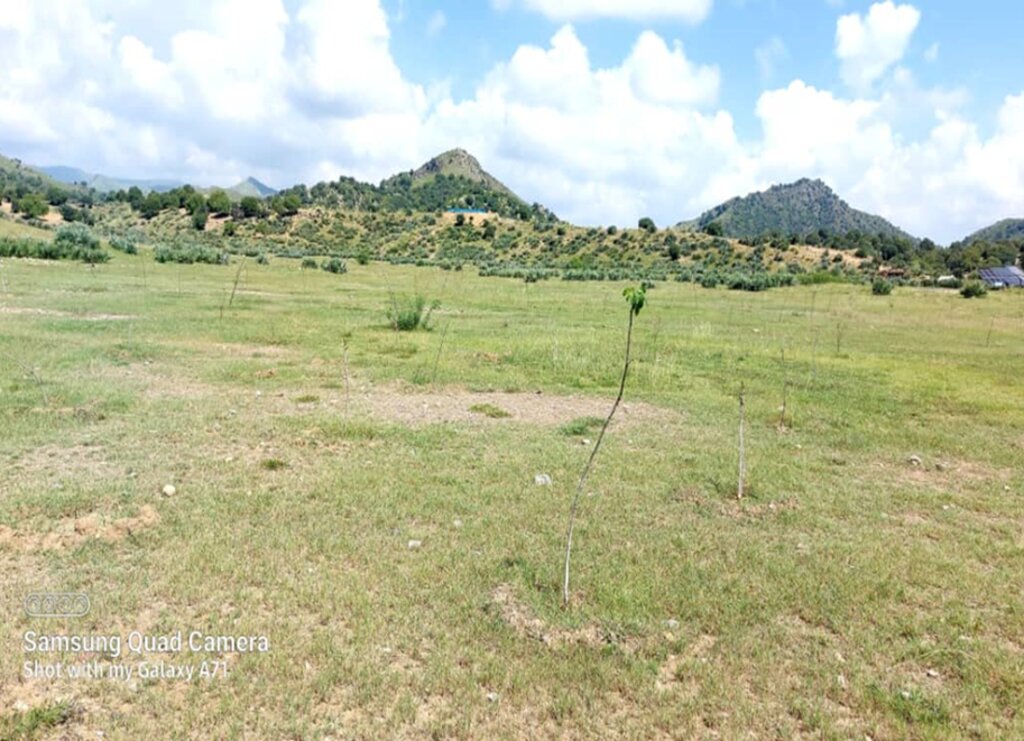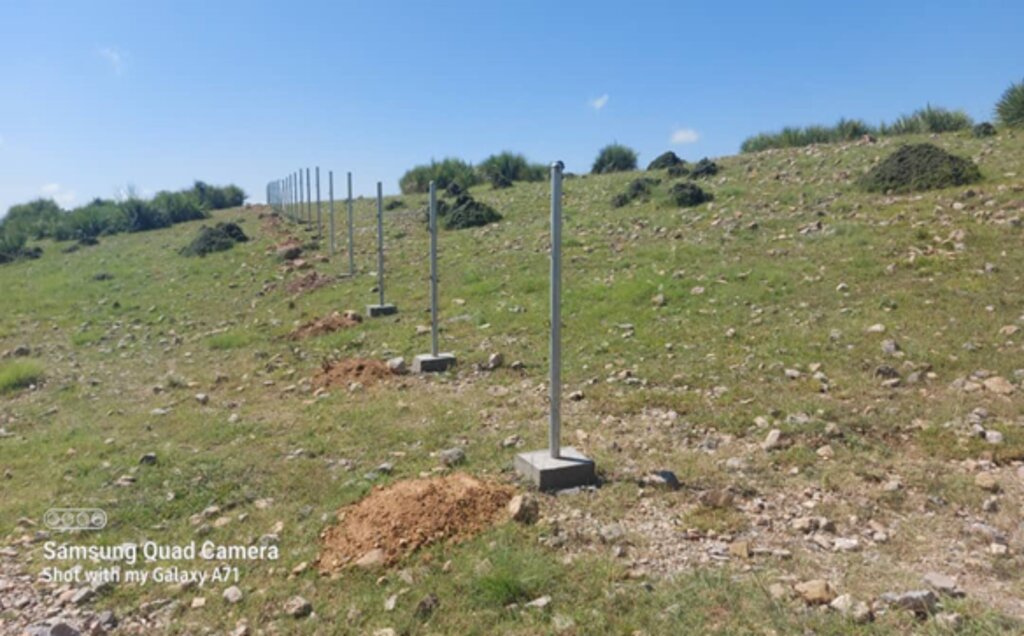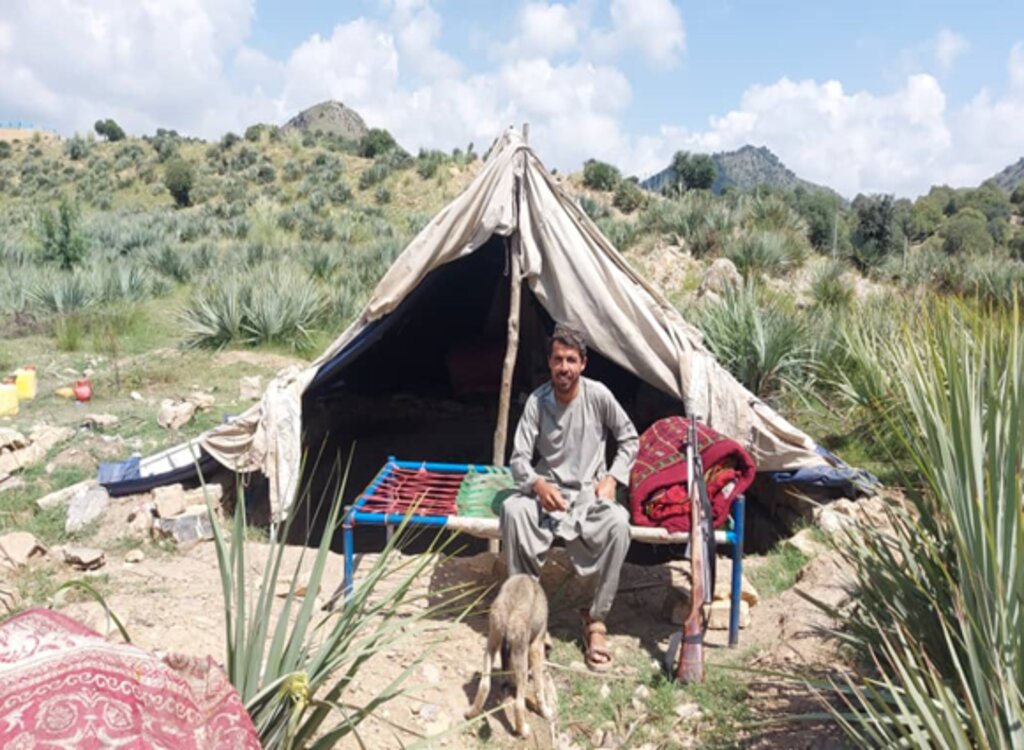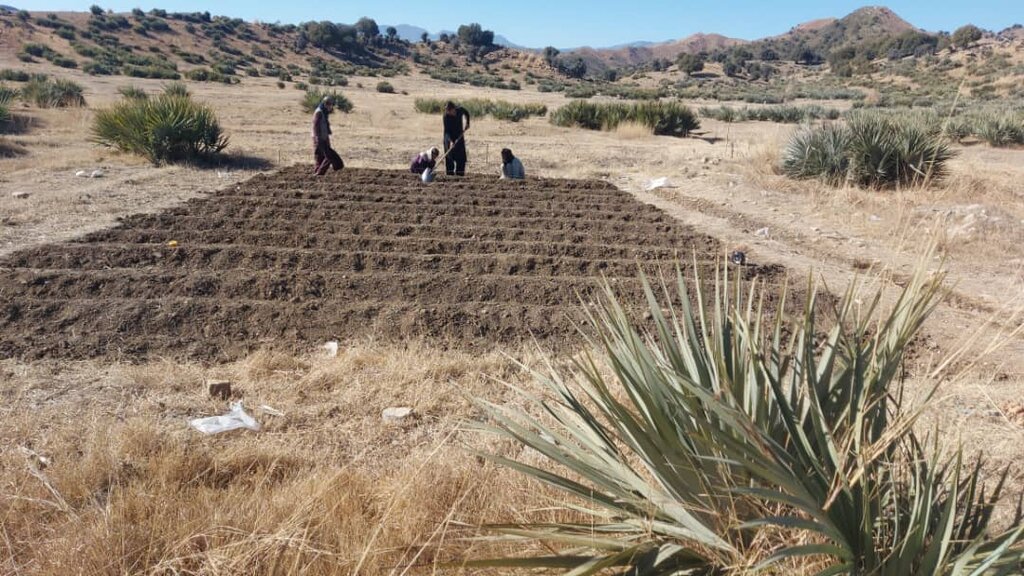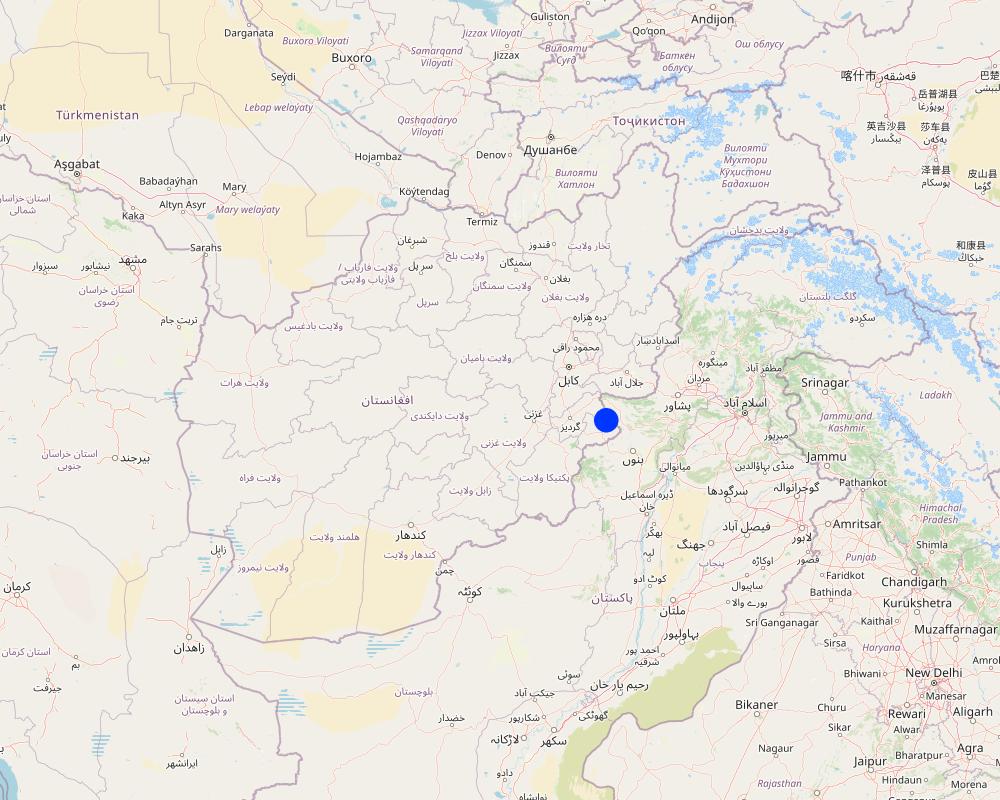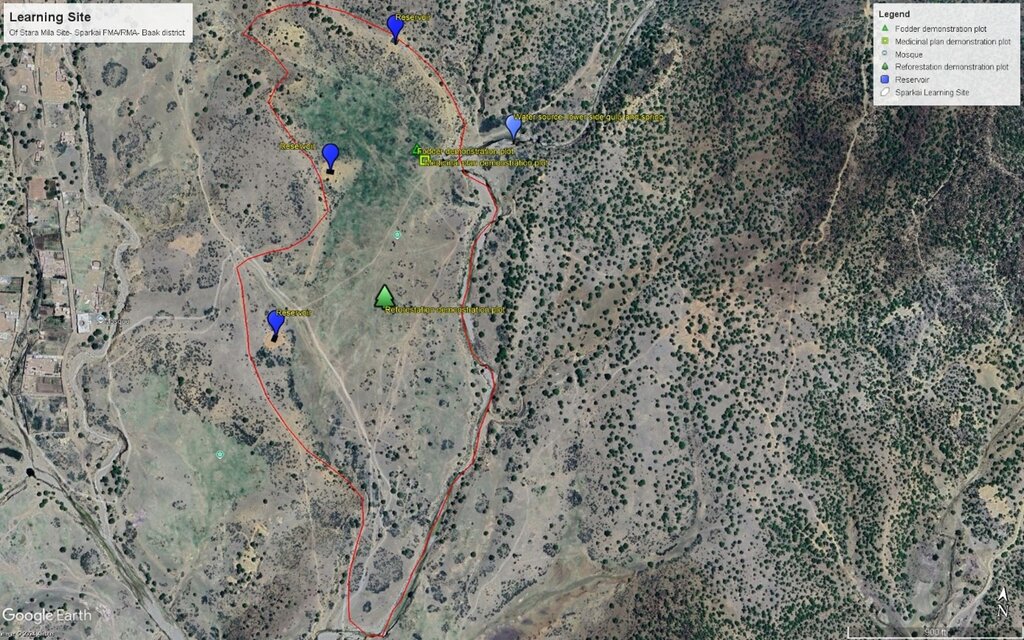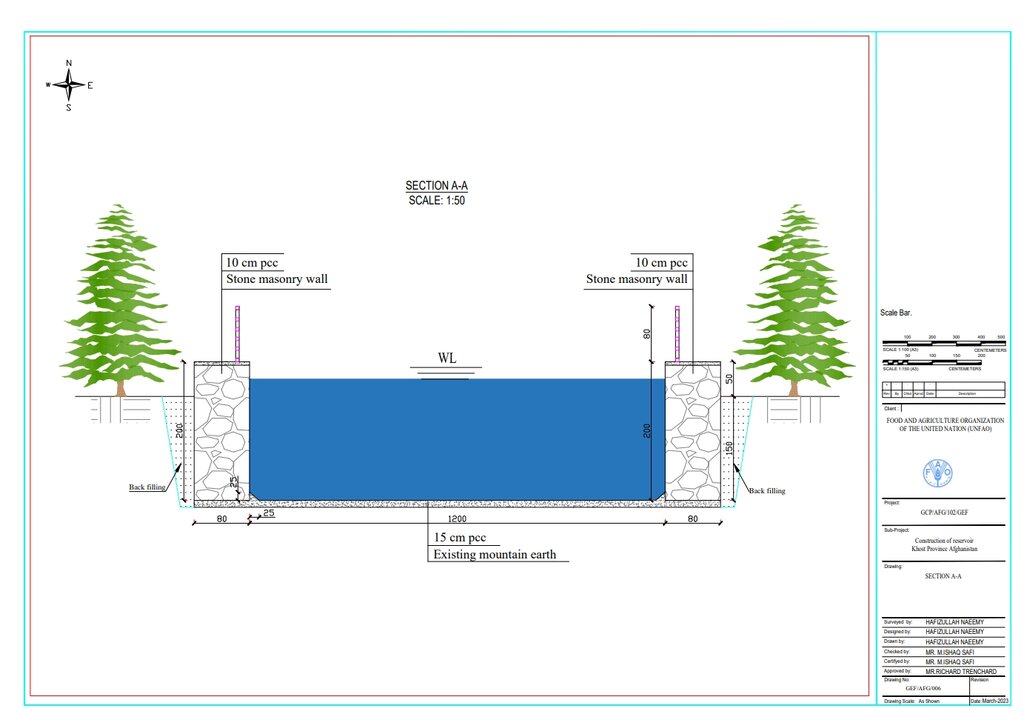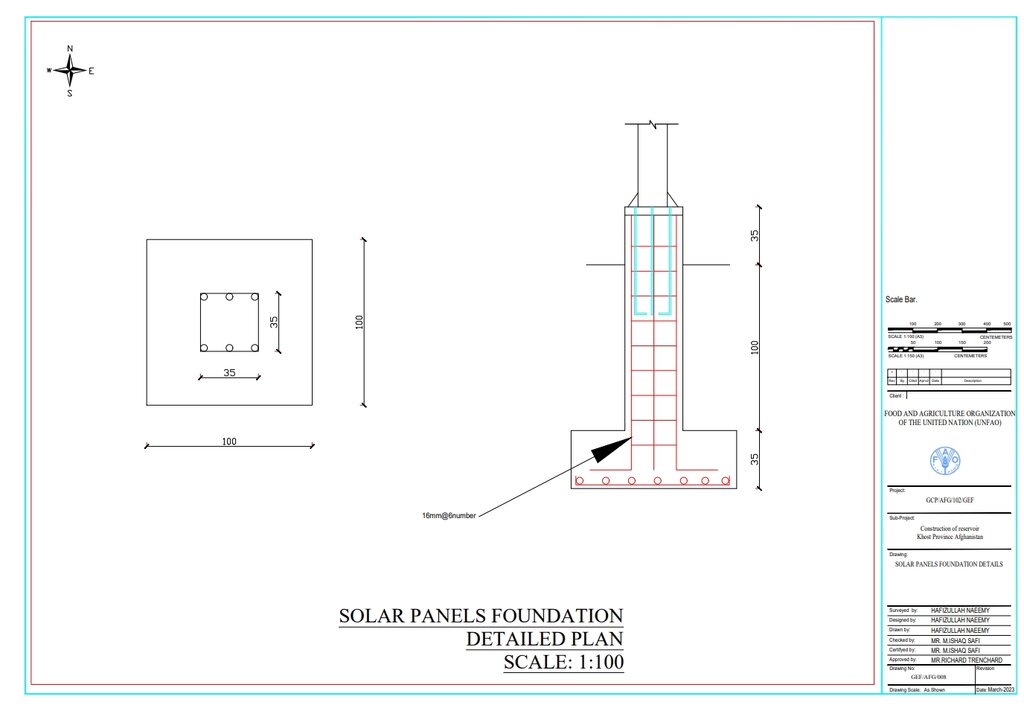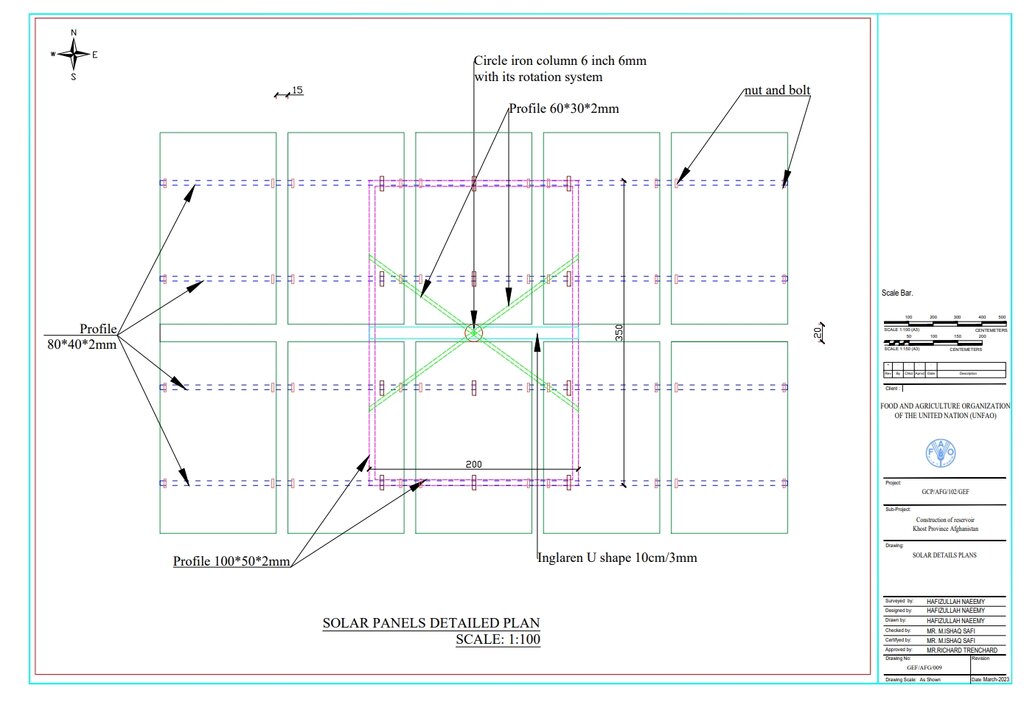Learning Site to promote Sustainable Land and Forest Management Practices in Khost [Афганистан]
- Создание:
- Обновить:
- Составитель: Mohammad Arif
- Редакторы: Megha bajaj, Mohammad Aslam Hasand, Afghanistan Safi
- Рецензенты: Rima Mekdaschi Studer, Illias Animon, Muhammad Ishaq Safi
په خوست ولایت کی د ځنګل او ځمکی بنسټیزه مدیریت عملی کارونو د پاره دزده کړی ساحی رامینځ ته کول
technologies_7460 - Афганистан
Просмотреть разделы
Развернуть все Свернуть все1. Общая информация
1.2 Контактные данные специалистов и организаций, участвующих в описании и оценке Технологии
землепользователь:
Akbar Muhajir
Sparkai Forest and Rangeland Management Association
Афганистан
Название проекта, содействовавшего документированию/оценке Технологии (если применимо)
Combating land degradation and biodiversity loss by promoting sustainable rangeland management and biodiversity conservation in AfghanistanНазвание организации (-ий), содействовавших документированию/оценке Технологии (если применимо)
FAO Afghanistan (FAO Afghanistan) - Афганистан1.3 Условия, регламентирующие использование данных, собранных ВОКАТ
Составитель и ответственный(-ые) специалист(-ы) согласны с условиями, регламентирующими использование собранных ВОКАТ данных:
Да
1.4 Декларация по устойчивости описываемой Технологии
Вызывает ли описанная здесь Технология проблемы деградации земель настолько, что ее нельзя назвать природосберегающей?
Нет
1.5 Ссылка на Анкету (ы) по Подходам УЗП (документируется с использованием ВОКАТ)
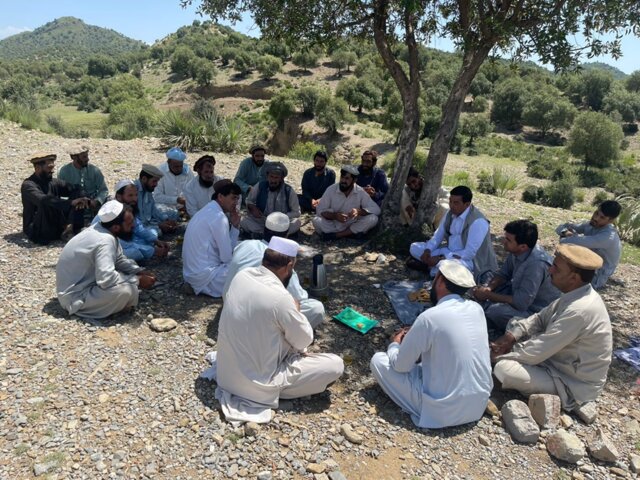
Stakeholder collaboration for building Learning Site for landscape … [Афганистан]
To raise awareness and ensure clear role delineation, a series of consultations were held with the local community, the Forest Management/Rangeland Management (FM/RM) association, and other key stakeholders. Memorandum of Understanding (MoU) that formally outlined the roles and responsibilities of each party was signed. Additionally, the FM/RM association issued a …
- Составитель: Mohammad Arif
2. Описание Технологии УЗП
2.1 Краткое описание Технологии
Определение Технологии:
The learning site incorporates several key elements of the technology including a solar-powered water lifting system, three reservoirs and an adopted irrigation system. It features demonstration plots for various initiatives, such as tree planting (walnut, almond, pomegranate and mulberry, the cultivation of fodder (alfalfal Mazari palm) and and medicinal plants (e,g, cumin), and a nursery (walnut) established through the community’s own contributions.
2.2 Подробное описание Технологии
Описание:
The site was rich in flora and fauna, but human and animal interference has led to significant degradation. Many indigenous plants have been uprooted, and wildlife has migrated due to the loss of habitat. In response, the community has begun to manage and restore the land through practices like rotational grazing and quarantine measures to combat illegal logging. The degradation of natural resources, particularly forests and rangelands, has significantly impacted local communities in Khost. Many residents rely on these resources for fuel, heating, and grazing livestock. However, challenges such as overgrazing, the uprooting of bushes and shrubs, and deforestation for fuel have led to considerable environmental degradation. The lack of proper management of these natural resources has resulted in consistent flooding, which erodes and pollutes agricultural lands. Additionally, local communities often do not recognize the value of these resources, leading to unsustainable land-use practices. Poverty, ongoing conflicts, political instability, and unemployment have driven residents to cut down trees for sale in local markets to support their livelihoods.
To address these challenges, we conducted a participatory assessment involving local communities and stakeholders, aiming to establish a learning site for sustainable land and forest management practices. Our assessment revealed that many local residents were unaware of sustainable practices or the ecological significance of these resources, contributing to ongoing environmental degradation.
After assessing the natural resources and community needs, we established a learning site for sustainable forest and rangeland management. Feasibility studies helped us identify available water sources, assess community interest, and select suitable land next to forests and rangelands. The site selected is easily accessible, located about 10 kilometers from the main road.
In the initial phase, we installed 26 solar panels on three metal stands, each with a capacity of 400 watts, positioned 200 meters from the water source. At the water source, we installed a 2-inch submersible pump to lift water to the learning site, which encompasses approximately 20 hectares of land across three small hills, each situated 300 meters apart.
We constructed three reservoirs, each with a capacity of 192 cubic meters. The first reservoir is located 300 meters from the water source and is fed by the solar system. A pipe network system utilizing 2-inch pipes connects the water source to the first reservoir and the other two reservoirs. This system allows the reservoirs to supply water to lower fields or demonstration plots via gravity.
In the demonstration plots, a network of pipes was installed every 50 meters, with taps placed accordingly. We established a 20-hectare learning site focused on sustainable forest and rangeland management practices, featuring demonstration plots for reforestation, fodder and medicinal plant production, reseeding, and a forest nursery. The dimensions of these plots include 10 hectares for reforestation, 2 hectares for fodder production, 0.5 hectares for medicinal plants, and 0.1 hectares for the walnut nursery. A total of 3,000 forest species were planted in the reforestation plot, along with alfalfa and Mazari palm in the fodder plots, and black cumin in the medicinal plot.
These plots are irrigated using flexible 1-inch pipes connected to the taps installed every 50 meters. Given Khost Province's favorable weather conditions, the plants require irrigation primarily from April to August; outside of this interval, the irrigation system provides sufficient water to sustain the site. The site were fenced with barbed wire for protection.
The technology is applied to communal land adjacent to forests and rangelands. It serves as an educational center for the local community, focusing on sustainable landscape restoration and management. A savings box was created, and a Forest and Rangeland Management Association was established. Social funds were set up, along with fencing and hiring guards for the maintenance of the technology.
Key infrastructure was established, including a solar-powered lifting system, constructed reservoirs, and a piping network for irrigation. Various forest species were planted in reforestation plots, while local seeds were planted in fodder and medicinal plots. Additionally, walnut seeds were sown in a nursery for diverse restoration practices. These efforts have revitalized the land. Barbed wire fencing was installed for protection, and the site is now fully operational as a learning site.
The introduction of this technology led to positive changes in the local community. They have successfully quarantined forest and rangeland, implemented rotational grazing, and collected local seeds and cuttings to plant on degraded lands and riverbanks. Community-based nurseries were also established to transplant seedlings into degraded forest areas, helping to revitalize natural resources.
The local community is optimistic about the technology, particularly the reservoir construction and solar-powered lifting systems that ensure water availability, as well as the restoration techniques employed. However, they expressed concerns about interference from neighbors, livestock grazing, floods that can clog pumps, and damage from hail and windstorms to solar panels.
2.3 Фотографии, иллюстрирующие Технологию
2.4 Видеоматериалы, иллюстрирующие Технологию
Комментарий, краткое описание:
N/A
2.5 Страна/ регион/ места, где применяется Технология, информация о которых собрана в данной Анкете
Страна:
Афганистан
Административная единица (Район/Область):
Khost
Более точная привязка места:
Stara Mila, Sparkai village of Baak district
Охарактеризуйте пространственное распространение Технологии :
- примененяется точечно/ на небольших участках
Технология применяется на ООПТ?
Нет
Пояснения:
The site is situated near a forest and rangeland, approximately 20 km from the Baak main road, extending towards the Zazi Maidan district. It is classified as communal land
Map
×2.6 Сколько лет применяется данная Технология
Год начала реализации:
2023
2.7 Внедрение Технологии
Укажите, как именно Технология УЗП была внедрена:
- через проекты/ внешнее вмешательство
Пояснения (тип проекта и т.д.):
FAO- GEF-07 Combating land degradation and biodiversity loss by promoting sustainable rangeland management and biodiversity conservation in Afghanistan (GEF7)
3. Классификация Технологии УЗП
3.1 Основные цели и задачи реализации Технологии
- снижение или предотвращение деградации земель, восстановление нарушенных земель
- сохранение экосистем
- сохранение/ повышение биоразнообразия
- адаптация к изменению климата / экстремальным погодным явлениям и их последствиям
- serves as educational centre for the local community on sustainable landscape restoration and management
3.2 Текущий(-ие) тип(-ы) землепользования на территории, где применяется Технология
Комбинированное землепользование в пределах одной и той же земельной единицы:
Да
Укажите сочетания типов землепользования (посевы / пастбища / деревья):
- Лесо-пастбищное хозяйство
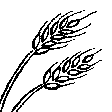
Пахотные угодья и плантации
- Древесные и кустарниковые культуры
Древесные и кустарниковые культуры - Уточните культуры:
- другие фрукты
- орехи (Бразильский орех, фисташки, грецкие орехи, миндаль и т. д.)
- walnut, almond, pomegranate, mulberry
Число урожаев за год:
- 1
Применяются ли посевы в междурядьях?
Нет
Применяется ли севооборот?
Нет
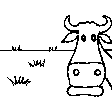
Пастбищные угодья
Экстенсивный выпас:
- Кочевое животноводство
- Полукочевое скотоводство
Интенсивный выпас/ выращивание кормов:
- Стойловое содержание/ нулевой выпас
- Улучшенные пастбища
Вид животных:
- cattle - dairy and beef (e.g. zebu)
- козы
- овца
Используется ли комплексное земледельческо-животноводческое хозяйство?
Нет
Продукты и услуги:
- мясо
- молоко
Виды:
cattle - dairy and beef (e.g. zebu)
Счет:
510
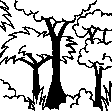
Леса/ лесистая местность
- (Квази-) Природные леса/ лесные массивы
(Квази-) Природные леса / лесные массивы: Укажите тип управления:
- Удаление сухостоя, хвороста; обрезка сучьев
- Использование недревесных лесных ресурсов
Тип (полу-) естественного леса:
- естественная растительность субтропических горных систем
- wild olive, black thorn, hop bush, Mazari palm, cumin
Являются ли указанные выше деревья лиственными или вечнозелеными?
- смешанные лиственные / вечнозеленые
Продукции и услуги:
- Древесина
- Другие продукты леса
- Рекреация/ туризм
- Защита от природных катаклизмов
Пояснения:
Due to poor management, the land has been overgrazed. To address this, we established a learning site focused on restoration through various interventions: reforestation, fodder and medicinal plant demonstration plots, and a 50-square-meter nursery for sapling production. The site is protected by fencing to prevent herders from grazing, allowing them to collect fodder instead. Some fodder is left in the field to produce seeds for natural regeneration.
Forest and Rangeland Management Association focuses on:
Local seed collection: Gathering native seeds to enhance biodiversity and ensure ecosystem resilience.
Ecotourism development: Encouraging visitors to explore the sites, fostering appreciation for local flora and fauna while supporting conservation efforts.
Regeneration of native species: Implementing strategies to restore and regenerate various native plant species, which play crucial roles in maintaining ecological balance.
Fodder production for silage: Cultivating high-quality fodder crops that contribute to livestock nutrition and support sustainable agriculture.
Sapling production through nurseries: Establishing nurseries dedicated to growing saplings of native forest species as well as fruit and nut trees, which can be used for reforestation, habitat restoration efforts and generating income.
3.3 Изменилось ли использование земель в связи с внедрением Технологии?
Изменилось ли использование земель в связи с внедрением Технологии?
- Да (Пожалуйста, заполните нижеприведенные вопросы относительно использования земель до внедрения Технологии)
Комбинированное землепользование в пределах одной и той же земельной единицы:
Да
Укажите сочетания типов землепользования (посевы / пастбища / деревья):
- Агро-пастбищное хозяйство ( включая растениеводство-животноводство)

Пастбищные угодья
Экстенсивный выпас:
- Кочевое животноводство
- Полукочевое скотоводство
Интенсивный выпас/ выращивание кормов:
- Стойловое содержание/ нулевой выпас
- Улучшенные пастбища
Вид животных:
- cattle - dairy and beef (e.g. zebu)
- козы
- овца
Используется ли комплексное земледельческо-животноводческое хозяйство?
Нет
Продукты и услуги:
- мясо
- молоко
Виды:
cattle - dairy and beef (e.g. zebu)
Счет:
510

Леса/ лесистая местность
- (Квази-) Природные леса/ лесные массивы
(Квази-) Природные леса / лесные массивы: Укажите тип управления:
- Удаление сухостоя, хвороста; обрезка сучьев
Тип (полу-) естественного леса:
- естественная растительность субтропических горных систем
- wild olive, Mazari palm, hop bush, black thorn and grasses
Являются ли указанные выше деревья лиственными или вечнозелеными?
- смешанные лиственные / вечнозеленые
Продукции и услуги:
- Древесина
- Дрова
- Рекреация/ туризм
- Защита от природных катаклизмов
Пояснения:
The area is a dry mountainous terrain with natural vegetation including wild olive, mazari palm, hopbush, and grasses. It supports nomadic and semi-nomadic pastoralism, primarily grazing goats, sheep, and cows.
3.4 Водоснабжение
Обеспеченность водой участков, где реализуется Технология :
- сочетание богарных и орошаемых земель
Пояснения:
Near the learning site, a gully and springs provide a year-round water source. We have installed a solar-powered lifting system and constructed three reservoirs to distribute water across 20 hectares, including the planted areas and demonstration plots. A network of pipes and taps with flexible hoses ensures efficient water distribution. This water source is exclusively for this site and does not affect neighboring villages or farmers.
3.5 Категория УЗП, к которой относится Технология
- лесное хозяйство в лесопосадках
- Улучшение почвенного/ растительного покрова
- Управление орошением (включая водоснабжение и дренаж)
3.6 Мероприятия УЗП, выполняемые в рамках Технологии
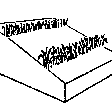
Мероприятия с использованием растительности
- Р1: Древесный и кустарниковый покров
- Р2: Злаковые и многолетние травянистые растения
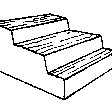
инженерные мероприятия
- И6: Стенки, барьеры, заборы, изгороди
- И7: Водосборное/ водопроводное/ оборудование для орошения
- И10: Энергосберегающие мероприятия
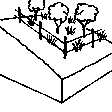
управленческие мероприятия
- У2: Изменение формы/ интенсивности хозяйствования
- У3: Размещение с учетом природных и социально-экономических условий
Пояснения:
The whole area 20 hectares have been fenced with barbed wire, under the structure measures, reservoirs have been constructed and dug pits for plants.
3.7 Основные проблемы деградации земель, на решение которых направлена Технология
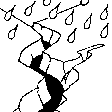
водная эрозия почв
- ВЭп: поверхностная эрозия/смыв верхних почвенных горизонтов
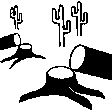
биологическая деградация
- Бр: сокращение растительного покрова
- Бм: утрата местообитаний
- Бв: потеря природного разнообразия
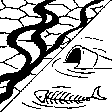
деградация водных ресурсов
- Вуп: изменение объема поверхностного стока
- Вуг: изменения уровня грунтовых вод/ водоносных горизонтов
- Взп: снижение качества поверхностных вод
- Взг: снижение качества грунтовых вод
Пояснения:
The local community relies on natural resources for their livelihoods, leading to deforestation, overgrazing, and the uprooting of shrubs and bushes for fuel. Severe runoff, droughts, and climate change have further contributed to environmental degradation.
3.8 Предотвращение и снижение деградации земель, или восстановление нарушенных земель
Укажите цель Технологии по отношению к деградации земель :
- восстановление/ реабилитация нарушенных земель
- адаптация к деградации земель
Пояснения:
An educational center (learning site) has been established on degraded land to enhance the capacity of the local community and other stakeholders about best practices for landscape restoration.
4. Технические характеристики, мероприятия по практической реализации, вложения и стоимость
4.1 Технический рисунок, иллюстрирующий Технологию
Спецификация (пояснения к техническому рисунку):
This GIS map highlights learning site elements. The blue pins indicate water source and reservoirs, while the green rectangular pins represent fodder demonstration plot. Yellow squire pin mark area dedicated to medicinal plants, and green tree-shaped pin indicate reforestation plot. Finally, the red track pin indicates location of barbed wire fencing. The site map has been prepared after the completion of intervention.
Автор:
Mohammad Omar Dost
Дата:
17/09/2024
Спецификация (пояснения к техническому рисунку):
Each of the three reservoirs measures 2m x 8m x 12m with a water depth of 2m, holding a total capacity of 192 cubic meters.
Автор:
Hafizullah Naeemy
Дата:
18/01/2023
Спецификация (пояснения к техническому рисунку):
The solar panel stands, including their foundations, are 2 meters in height, with each panel measuring 1.2 meters high and 0.6 meters wide. The panels are installed at a 45° slope angle.
Автор:
Hafizullah Naeemy
Дата:
22/01/2023
Спецификация (пояснения к техническому рисунку):
Detailed plan for solar panel installation: Three metal stands designed to support and rotate 26 solar panels, optimizing sunlight exposure throughout the day.
Автор:
Hafizullah Naeemy
Дата:
23/01/2023
4.2 Общая информация по необходимым вложениям и стоимости
Уточните, как рассчитывались затраты и вложения:
- на площадь, где применяется Технология
Укажите размер и единицу площади:
20 Hectares
Укажите денежные единицы, использованные для подсчета затрат:
- Доллары США
Укажите среднюю дневную заработную плату наемных работников:
5 USD
4.3 Мероприятия, необходимые для начала реализации
| Деятельность | Время (сессия) | |
|---|---|---|
| 1. | Conduction of survey, feasibility study, and site selection | 1st month |
| 2. | Finding of water source | 2nd month |
| 3. | Installation of solar power lifting system | 4rd month |
| 4. | Construction of reservoirs | 5th month |
| 5. | Installation of irrigation piping system | 12th-1st month of the year |
| 6. | Saplings delivered by supplier to the site from contracted nurseries | 1st-2th month |
| 7. | Planting of saplings | 2-3rdmonth |
| 8. | Preparation of two demonstration plots for fodder and medicinal plants | 3rd month |
| 9. | Planting of seeds for fodder and medicinal plants | 3rd month |
| 10. | Installation of barbed wire fencing for 20 hectares | 7-9th month |
| 11. | Ensurance of operation and maintenance of all systems | 24th month |
4.4 Вложения и затраты, необходимые для начала реализации
| Опишите затраты | Единица | Количество | Затраты на единицу | Общая стоимость на единицу | % затрат, оплаченных землепользователями | |
|---|---|---|---|---|---|---|
| Оплата труда | Installation of solar system and pipe installation | Person/day | 100,0 | 6,0 | 600,0 | |
| Оплата труда | Digging pits, plantation and irrigation of Plants | Person/day | 453,0 | 6,0 | 2718,0 | 100,0 |
| Оплата труда | Excavation of foundation | Person/day | 80,0 | 5,0 | 400,0 | |
| Оплата труда | Preparing demonstration plots for fodder and medicinal plants | Square meter | 25000,0 | 0,13 | 3250,0 | 100,0 |
| Оплата труда | Stone Masonry | Person/day | 136,0 | 6,0 | 816,0 | |
| Оплата труда | Plastering | Person/day | 72,0 | 5,0 | 360,0 | |
| Оплата труда | Plain cement concrete | Person/day | 57,0 | 5,0 | 285,0 | |
| Оплата труда | Plain cement concrete PCC M20 | Person/day | 390,0 | 5,0 | 1950,0 | |
| Оборудование | Entrance Gate | Number | 1,0 | 200,0 | 200,0 | |
| Оборудование | Solar panel 400W | Sheet | 26,0 | 140,0 | 3640,0 | |
| Оборудование | Rotating PV panel mount | Number | 3,0 | 350,0 | 1050,0 | |
| Оборудование | Submersible pump 2 inch (10PH-7500W) | Number | 1,0 | 300,0 | 300,0 | |
| Оборудование | DC-AC current inverter 7.5-11kw | Number | 1,0 | 200,0 | 200,0 | |
| Оборудование | Distribution board | Number | 1,0 | 75,0 | 75,0 | |
| Оборудование | Sign board | Number | 3,0 | 3,0 | 9,0 | |
| Оборудование | Sign board | Number | 1,0 | 150,0 | 150,0 | |
| Посадочный материал | Walnut | Sapling | 2000,0 | 0,56 | 1120,0 | |
| Посадочный материал | Almond | Sapling | 500,0 | 0,67 | 335,0 | |
| Посадочный материал | Mulberry | Sapling | 100,0 | 0,44 | 44,0 | |
| Посадочный материал | Pomegranate | Sapling | 500,0 | 0,51 | 255,0 | |
| Посадочный материал | Alfalfa seed | Kg | 50,0 | 2,72 | 136,0 | |
| Посадочный материал | Black Cumin seed | Kg | 15,0 | 6,72 | 100,8 | |
| Строительные материалы | Tap | Number | 30,0 | 3,0 | 90,0 | |
| Строительные материалы | Flexon 1 inch rubberized pipes | Meter | 1250,0 | 2,0 | 2500,0 | |
| Строительные материалы | DC current wire | Meter | 100,0 | 2,0 | 200,0 | |
| Строительные материалы | AC current wire | Meter | 150,0 | 2,0 | 300,0 | |
| Строительные материалы | Polyethylene pipe 1.5 inch | Meter | 2000,0 | 2,0 | 4000,0 | |
| Строительные материалы | Polyethylene pipe 2 inch | Meter | 780,0 | 3,0 | 2340,0 | |
| Строительные материалы | Polyethylene pipe 3 inch | Meter | 300,0 | 5,0 | 1500,0 | |
| Другие | Delivery to the site | Lump sum | 1,0 | 300,0 | 300,0 | |
| Другие | Galvanized iron pipe 2 inch for pillar | Meter | 125,0 | 5,0 | 625,0 | |
| Другие | Galvanized iron pipe 1.5 inch for bracing | Number | 470,0 | 10,5 | 4935,0 | |
| Другие | Fence | Meter | 15,0 | 25,0 | 375,0 | |
| Другие | Double strand galvanized barbed wire for fencing | Meter | 4200,0 | 0,25 | 1050,0 | |
| Общая стоимость запуска Технологии | 36208,8 | |||||
| Общие затраты на создание Технологии в долларах США | 36208,8 | |||||
Если землепользователем оплачено менее 100% затрат, укажите, кем покрывались остальные затраты:
FAO under GEF-7 project
Пояснения:
The land users contributed primarily by digging pits for planting, preparing demonstration plots, and maintaining the system. Additionally, they hired guards to protect the area from disturbances. All other costs associated with the project were covered by the FAO GEF-7.
4.5 Поддержание/ текущее обслуживание
| Деятельность | Сроки/ повторяемость проведения | |
|---|---|---|
| 1. | Removal of sediment from reservoirs | Spring/annually |
| 2. | Safeguarding the site such as solar system, and on-site interventions | All seasons/regular |
| 3. | Repairing solar system & water pump and pipes | Regularly |
| 4. | Demonstration plots maintenance (pest-diseases control, mulching, weeding and Irrigation | Spring & Automn/annually |
| 5. | Replacing dead and dried plants | Feb/two times (1st & 2nd year) |
| 6. | Repairing fencing | Year around |
4.6 Стоимость поддержания/ текущего обслуживания ( в год)
| Опишите затраты | Единица | Количество | Затраты на единицу | Общая стоимость на единицу | % затрат, оплаченных землепользователями | |
|---|---|---|---|---|---|---|
| Оплата труда | Labour for cleaning the reservoir from sediment annually | Person/day | 15,0 | 5,0 | 75,0 | 100,0 |
| Оплата труда | Hiring guards for safeguarding the site | Person/day | 12,0 | 100,0 | 1200,0 | 100,0 |
| Оплата труда | Fixing pump when needed | Lump sum | 1,0 | 50,0 | 50,0 | 100,0 |
| Оплата труда | Repairing pipes | Lump Sum | 1,0 | 100,0 | 100,0 | 100,0 |
| Оплата труда | Repairing solar panel when required | Lump sum | 1,0 | 1000,0 | 1000,0 | 100,0 |
| Оплата труда | Weed control | Person/day | 10,0 | 5,0 | 50,0 | 100,0 |
| Оплата труда | Integrated Pest Management | Lump sum | 1,0 | 5,0 | 5,0 | 100,0 |
| Оплата труда | Irrigation | Person/day | 8,0 | 50,0 | 400,0 | 100,0 |
| Посадочный материал | Saplings | Number | 1500,0 | 0,56 | 840,0 | 100,0 |
| Посадочный материал | Local Seed | Kg | 15,0 | 26,0 | 390,0 | 100,0 |
| Строительные материалы | Barbed wire | meter | 3000,0 | 0,14 | 420,0 | 100,0 |
| Другие | Replacing dead and dried plants | Lump sum | 1,0 | 300,0 | 300,0 | |
| Общая стоимость поддержания Технологии | 4830,0 | |||||
| Общие затраты на поддержание Технологии в долларах США | 4830,0 | |||||
4.7 Наиболее значимые факторы, влияющие на стоимость затрат
Опишите наиболее значимые факторы, влияющие на стоимость затрат:
Construction materials cost
5. Природные и социально-экономические условия
5.1 Климат
Среднегодовое количество осадков
- < 250 мм
- 251-500 мм
- 501-750 мм
- 751-1000 мм
- 1001-1500 мм
- 1501-2000 мм
- 2001-3000 мм
- 3001-4000 мм
- > 4000 мм
Агроклиматическая зона
- полузасушливая
5.2 Рельеф
Склоны (преобладающие):
- пологие (0-2%)
- покатые (3-5%)
- покато-крутые (6-10%)
- крутые (11-15%)
- очень крутые (16-30%)
- чрезвычайно крутые (31-60%)
- обрывистые (>60%)
Формы рельефа:
- плато/ равнины
- гребни хребтов/холмов
- склоны гор
- склоны холмов
- подножья
- днища долин
Зона высотной поясности:
- 0-100 м над уровнем моря
- 101-500 м н.у.м.
- 501-1000 м н.у.м.
- 1001-1500 м н.у.м.
- 1501-2000 м н.у.м.
- 2001-2500 м н.у.м.
- 2501-3000 м н.у.м.
- 3001-4000 м н.у.м.
- > 4 тыс. м н.у.м.
Укажите, приурочено ли применение Технологии к специфическим условиям:
- в условиях выпуклого рельефа
Комментарии и дополнительные сведения по условиям рельефа/ топографии :
The site is situated near a forest and rangeland, with a gentle slope of approximately 45 degrees and an elevation of 1,279.49 meters above sea level. Surrounding mountains are covered with wild olive forests.
5.3 Почвы
Средняя мощность почв:
- поверхностные (0-20 см)
- неглубокие (21-50 см)
- умеренно глубокие (51-80 см)
- глубокие (81-120 см)
- очень глубокие (> 120 см)
Гранулометрический состав (верхнего горизонта):
- средние фракции (суглинистый, супесчаный)
Гранулометрический состав (на глубине более 20 см):
- средние фракции (суглинистый, супесчаный)
Содержание органического вещества в верхнем горизонте:
- низкое (< 1%)
5.4 Доступность и качество воды
Уровень грунтовых вод:
5-50 м
Доступность поверхностных вод:
хорошая
Качество воды (без обработки):
питьевая вода хорошего качества
Качество воды относится к:
одновременно грунтовые и поверхностные воды
Является ли солёность воды проблемой?
Нет
Происходят ли периодические затопления территории?
Да
Регулярность:
эпизодически
Комментарии и дополнительная информация по качеству и количеству воды:
The water quality meets site requirements; however, seasonal fluctuations occur due to droughts. Floods in the lower gully, carry debris and sediments that can impact the source.
5.5 Биоразнообразие
Видовое разнообразие:
- средняя
Разнообразие местообитаний:
- средняя
Комментарии и дополнительная информация по биоразнообразию:
The site was rich in flora and fauna, but human and animal interference has led to significant degradation. Many indigenous plants have been uprooted, and wildlife has migrated due to the loss of habitat. In response, the community has begun to manage and restore the land through practices like rotational grazing and quarantine measures to combat illegal logging.
5.6 Характеристика землепользователей, применяющих Технологию
Осёдлый или кочевой:
- Осёдлый
Рыночная ориентация производства:
- смешанный (натуральный / коммерческий)
Доходы из других источников:
- < 10% всех доходов
Относительный уровень достатка:
- плохой
Индивидуальное или коллективное хозяйство:
- группа/ община
Уровень механизации:
- ручной труд
Пол:
- мужчины
Возраст землепользователей:
- средний возраст
5.7 Средняя площадь земель, используемых землепользователями с применением Технологии
- < 0,5 га
- 0,5-1 га
- 1-2 га
- 2-5 га
- 5-15 га
- 15-50 га
- 50-100 га
- 100-500 га
- 500-1000 га
- 1000-10000 га
- > 10000 га
Считается ли это мелким, средним или крупным хозяйством (по местным масштабам)?
- мелкое
Пояснения:
The land in question is communal and remains undivided, with no plans for future distribution. Most users have limited agricultural land downstream, typically no more than 0.5 hectares per household for crop cultivation. The learning site has been dedicated by the local community for future generations and educational purposes. Previously, this land was unused and primarily designated for grazing.
5.8 Собственность на землю, права на земле- и водопользование
Землевладелец:
- общинная/ поселковая
Право землепользования:
- общинное (контролируемое)
Право водопользования:
- общинное (контролируемое)
Права на землепользование основаны на традиционной правовой системе?
Да
Поясните:
Land use rights in traditional legal systems are generally straightforward, with each family in a village having equal access to natural resources.
Пояснения:
Overall, this traditional approach emphasizes community and family roles in resource management, balancing individual rights with communal responsibilities
5.9 Доступ к базовым услугам и инфраструктуре
медицинское обслуживание:
- плохой
- средний
- хорошая
образование:
- плохой
- средний
- хорошая
технические консультации:
- плохой
- средний
- хорошая
занятость (вне хозяйства):
- плохой
- средний
- хорошая
рынки:
- плохой
- средний
- хорошая
электроснабжение:
- плохой
- средний
- хорошая
транспорт и дорожная сеть:
- плохой
- средний
- хорошая
водоснабжение и канализация:
- плохой
- средний
- хорошая
финансовые услуги:
- плохой
- средний
- хорошая
Пояснения:
Due to three to four decades of political conflict, people lack access to essential services and infrastructure. This situation has been largely overlooked, with insufficient attention given to providing these services. Additionally, there has been a lack of budget allocation and support from the government and NGOs. As a result, communities continue to suffer from inadequate resources and infrastructure development.
6. Воздействия и заключительные положения
6.1 Влияние Технологии УЗП в пределах территории ее применения
Социально-экономическое воздействие
Продуктивность
производство продуктов животноводства
Комментарий/ пояснения:
The local community is adopting rotational grazing and quarantine measures on rangeland, while also exploring silage-making and hay production techniques. Additionally, they are identifying alternative winter feed options for their animals.
качество леса/ древостоя
Комментарий/ пояснения:
The local community has successfully quarantined all forest areas, effectively controlling illegal logging and managing grazing. As a result, the forest has been revitalized and is undergoing natural regeneration
продуктивность недревесных продуктов леса
Комментарий/ пояснения:
The local community is utilizing Mazari palm for handcrafted products while also focusing on agroforestry. They have established fruit orchards and are collecting blackthorn, which they sell in the bazaar to support their livelihoods.
площадь, используемая для производства продукции
Комментарий/ пояснения:
Previously, the community overgrazed the land and cut down trees for their livelihoods. However, after implementing quarantine measures and rotational grazing practices, the area is now showing signs of regeneration and has the potential to become a productive landscape in the future.
управление землями
Комментарий/ пояснения:
Following these practices, the local community has effectively managed more land under proper stewardship, including forest and rangeland quarantine and controlled grazing. They are now applying these methods in their vicinity, leading to the successful management of additional areas.
Доступность и качество воды
доступность оросительных вод
Комментарий/ пояснения:
Through revegetation and improved land cover, water seeps into the ground, recharging the water table and increasing availability for irrigation.
Доходы и затраты
разнообразие источников дохода
Социальное и культурное воздействие
возможности отдыха и рекреации
Комментарий/ пояснения:
FAO and Forest and Rangeland Management Association have successfully revitalized this area, transforming it into a lush and green landscape. Many of the previously destroyed species regenerated, creating a thriving ecosystem. This site is now a focal point, surrounded by majestic mountains and rich forests, with water flowing from the upper watershed. It has become a popular destination for picnics and visits, where people can enjoy the soothing sounds of birds and the vibrant greenery of the surroundings.
местное самоуправление
институты госуправления
знания в области УЗП/ деградации земель
смягчение конфликтов
Экологическое воздействие
Водный цикл/ поверхностный сток
количество воды
сбор воды/ водоудержание
поверхностный сток
Почвы
влажность почв
почвенный покров
утрата почв
Биоразнообразие: растительность, животный мир
Растительный покров
Комментарий/ пояснения:
Through applying quarantine, rotational grazing, control grazing the vegetation covered increased.
биомасса/ содержание углерода в надземной биомассе
Комментарий/ пояснения:
Biomass above the ground is increased
разнообразие флоры
Комментарий/ пояснения:
most of the seed regenerating and all the cut trees and bushes revegetated.
разнообразие фауны
Комментарий/ пояснения:
Various migratory animals and birds have returned to the area due to the protection measures in place and the prohibition of human activities.
Климат и снижение риска стихийных бедствий
последствия наводнений
Комментарий/ пояснения:
Most of the riverbanks have been successfully revegetated through effective control measures, including water filtration during rain and floods. Local communities have also learned to plant cuttings along the riverbanks and shorelines, contributing to the restoration of these vital ecosystems.
влияние засух
выбросы углекислого газа и парниковых газов
Комментарий/ пояснения:
Healthy ecosystems like forests and wetlands act as carbon sinks, absorbing more CO2 through photosynthesis. Improved soil health and vegetation cover also enhance carbon storage, while restoring habitats promotes biodiversity, creating a more resilient ecosystem that sequesters carbon effectively.
6.2 Влияние Технологии за пределами территории ее применения
доступность воды
Комментарий/ пояснения:
Through revegetation and improved land cover, water seeps into the ground, recharging the water table.
загрязнение подземных/ речных вод
отложения, переносимые ветром
ущерб объектам инфраструктуры общего/ частного пользования
воздействие парниковых газов
6.3 Подверженность и чувствительность Технологии УЗП к постепенным изменениям климата и экстремальным погодным явлениям/ стихийным бедствиям, связанным с изменением климата (в понимании землепользователей)
Постепенное изменение климата
Постепенное изменение климата
| Сезон | увеличение или уменьшение | Насколько успешно Технология справляется с этим? | |
|---|---|---|---|
| среднегодовые температуры | снизилось | очень плохо | |
| среднегодовое количество осадков | увеличилось | очень плохо | |
| сезонное количество осадков | лето | увеличилось | очень плохо |
Экстремальные явления, связанные с изменением климата (стихийные бедствия)
Погодные стихийные бедствия
| Насколько успешно Технология справляется с этим? | |
|---|---|
| местные снежные бури | очень плохо |
Стихийные бедствия климатического характера
| Насколько успешно Технология справляется с этим? | |
|---|---|
| сильная жара | очень плохо |
| засухи | очень плохо |
Гидрологические стихийные бедствия
| Насколько успешно Технология справляется с этим? | |
|---|---|
| паводки | очень плохо |
Пояснения:
Before the implementation of the project land users faced severe challenges, including drought, high temperatures, water scarcity for irrigation, reduced yields, and a lack of winter feed alternatives for livestock.
Following the introduction of sustainable rangeland management and biodiversity conservation, local communities adopted rotational grazing practices and protected forests from cutting, which had previously been their main source of income. As a result, vegetation cover improved, carbon stocks increased, and rainwater began to seep into the ground, recharging the water table, springs, canals, and Karezes. These efforts reulted in a more resilient and productive environment.
6.4 Анализ эффективности затрат
Насколько получаемый результат сопоставим с первоначальными вложениями (с точки зрения землепользователей)?
Эффективность затрат в краткосрочной перспективе:
слабо позитивное
Эффективность затрат в долгосрочной перспективе:
позитивное
Насколько получаемый результат сопоставим с текущими расходами по поддержанию технологии (с точки зрения землепользователей)?
Эффективность затрат в краткосрочной перспективе:
слабо позитивное
Эффективность затрат в долгосрочной перспективе:
очень позитивное
6.5 Внедрение Технологии
- 1-10%
Среди применяющих Технологию землепользователей, какова доля лиц, применяющих её по собственной инициативе, т.е. без какого-либо материального стимулирования со стороны?
- 0-10%
Пояснения:
The adoption of the technology in the specified area has primarily been spontaneous, significantly influenced by the support provided by the project. While a small percentage of land users may have received material incentives, the majority embraced the technology due to its demonstrated benefits and the project's educational efforts. This support helped to build trust and confidence among the land users, enabling them to implement the technology effectively in their practices. Overall, this highlights the importance of community engagement and capacity building in fostering sustainable land management practices.
6.6 Адаптация
Была ли Технология УЗП изменена в недавнее время с целью адаптации к меняющимся условиям среды?
Нет
6.7 Сильные стороны/ преимущества/ возможности Технологии
| Сильные стороны/ преимущества/ возможности по мнению землепользователей |
|---|
| It is crucial for local communities to learn sustainable land and forest restoration techniques. These methods are not only accessible but also involve minimal operational costs. By empowering land users with this knowledge. |
| We can adopt sustainable land and forest management practices to revitalize our degraded land. This learning process is straightforward and easily applicable. |
| We have great opportunities and abundant resources to utilize. This area serves as a hub for scaling sustainable practices, allowing us to learn, observe, and implement solutions that will benefit future generations. |
| We can efficiently use surface water for irrigation instead of groundwater, helping to restore degraded land through these initiatives. |
| Reduce greenhouse gas emissions through effective carbon sequestration. |
| Learn regeneration techniques, rainwater harvesting, and grazing management methods like rotational grazing. Focus on producing fodder and medicinal plants, while understanding indigenous plants and shrubs for the future. |
| Сильные стороны/ преимущества/ возможности по мнению составителя или других ключевых специалистов |
|---|
| This site is highly accessible, surrounded by dense forests and extensive rangelands that can be utilized sustainably. |
| Local community members, university students, and stakeholders can easily visit this site. |
| This site is an excellent destination for tourists to visit, enjoy, and learn about the importance of natural resources and their management techniques. |
| The local community can easily adopt these simple techniques to learn sustainable land and forest restoration practices. |
| The local community has hired guards to maintain the site effectively. They are gaining knowledge and enhancing their capacity for future interventions, contributing positively to development initiatives. |
6.8 Слабые стороны/ недостатки/ риски Технологии и пути их преодоления
| Слабые стороны/ недостатки/ риски по мнению землепользователей | Возможные пути их преодоления/снижения? |
|---|---|
| Insufficient maintenance and repair services for the technology. | Establishing strong linkages with service providers and maintenance support. This also facilitates nationwide technology transfer, enabling broader adoption and implementation of sustainable practices. |
| There is a lack of qualified professionals on-site to teach visitors the technical aspects of the technology. This gap hinders effective learning and limits the ability of visitors to fully understand and engage with the technology. | Hire on-farm officers to oversee and manage the learning site and provide information to visitors. |
| A check dam is required in the gully to store water for sustainability, especially during drought seasons when water availability decreases. | Construct a check dam in the lower section of the gully to store water for sustainability, allowing visitors to learn about water harvesting techniques. |
| There are currently no available resources for replacing the dead plants. | Establish nurseries for forest species to produce saplings that can replace dead and dried plants in the future. |
| Слабые стороны/ недостатки/ риски по мнению составителя или ответственных специалистов | Возможные пути их преодоления/снижения? |
|---|---|
| There are concerns about windstorms and hail potentially damaging the solar panels. | The local community should establish a social fund to cover repairs for any damage to solar panels caused by windstorms or hail, as well as to fund the installation of fencing around the solar panel stands. |
| Concerns have arisen regarding land disputes as the local community acts on land distribution amidst a growing population. | All villagers should receive a formal guaranteed letter, signed by the district governor, ensuring that no future actions will be taken to redistribute this site among the villagers. |
| There is a lack of essential water structures, such as percolation tanks and detention ponds, for effective rainwater harvesting. | Construct percolation tanks and detention ponds to harvest rainwater, which can be used to water livestock. Additionally, this initiative will provide an opportunity to learn and implement dryland farming techniques. |
| Too much water is wasted through flexible pipe basin irrigation methods. Additionally, required live hedges for fencing and windbreaks. | Install a drip irrigation system with an efficient piping layout and plant pine, poplar, and other trees alongside barbed wire to create a windbreak and a natural barrier for site protection. This will also provide an opportunity to learn various agricultural techniques. |
7. Справочные материалы и ссылки
7.1 Методы сбора/ источники информации
- выезды на места, полевые обследования
20
- опросы землепользователей
11
- опросы специалистов/экспертов по УЗП
5
- данные, собранные из отчетов и достоверных документов
3
Когда были собраны данные (на местах)?
10/10/2024
Пояснения:
The project was actively involved in all phases, from selection to implementation. Data was collected from local community volunteers, as well as SLM specialists and engineers.
7.2 Ссылки на опубликованные материалы
Название, автор, год публикации, ISBN:
N/A
7.3 Ссылки на соответствующую онлайн-информацию
Название/ описание:
N/A
7.4 Общие комментарии
The questionnaire is well-structured, but some sections, particularly 6.2 and 6.3, need simplification. Additionally, the database should provide outputs during data processing, highlighting both best practices and common mistakes related to the technology. This will help us generate a comprehensive report that showcases effective practices and identifies areas for improvement.
Ссылки и модули
Развернуть все Свернуть всеСсылки

Stakeholder collaboration for building Learning Site for landscape … [Афганистан]
To raise awareness and ensure clear role delineation, a series of consultations were held with the local community, the Forest Management/Rangeland Management (FM/RM) association, and other key stakeholders. Memorandum of Understanding (MoU) that formally outlined the roles and responsibilities of each party was signed. Additionally, the FM/RM association issued a …
- Составитель: Mohammad Arif
Модули
Нет модулей


